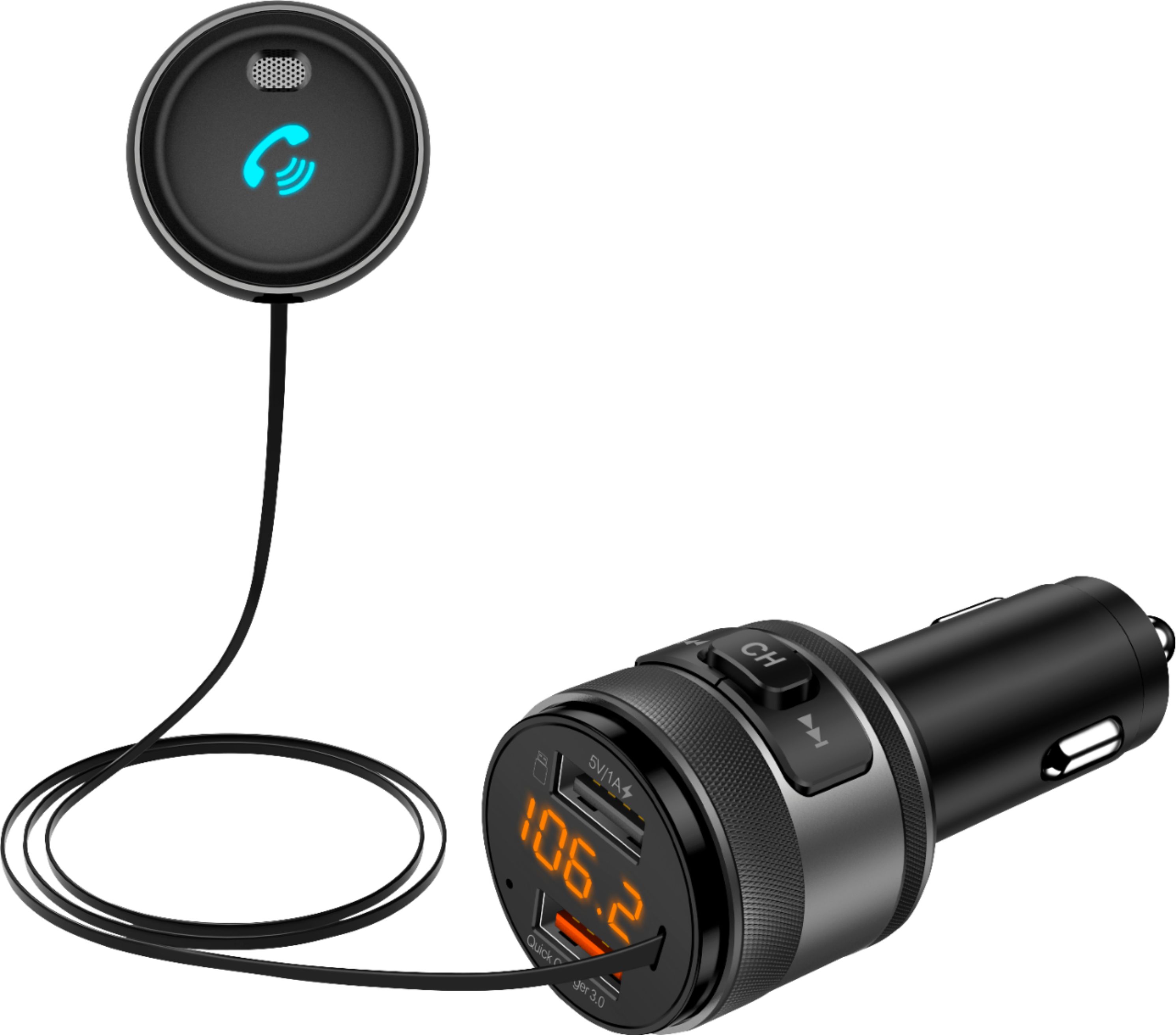
Introduction
Owning an older vehicle without built-in Bluetooth connectivity can be a hassle, but a Bluetooth FM transmitter offers an excellent solution. These devices use radio frequencies to transmit audio signals from your smartphone or tablet to your car's FM radio. This article highlights the best Bluetooth FM transmitters available, focusing on high sound quality and reliable performance.
What to Look for in a Bluetooth FM Transmitter
Understanding the key factors that make a good Bluetooth FM transmitter is essential. Here are some important considerations:
Audio Quality
The primary purpose of a Bluetooth FM transmitter is to provide high-quality audio. Devices supporting advanced audio codecs like aptX or aptX HD ensure superior sound quality over Bluetooth.
Bluetooth Version
Newer Bluetooth versions, such as Bluetooth 5.0 or 5.3, offer faster data transmission speeds, greater range, and lower power consumption. These features contribute to higher audio quality and less battery drain on your phone.
Hands-Free Calling
A built-in microphone is crucial for hands-free calling. Devices with noise cancellation features ensure clear voice calls even in noisy environments.
USB Ports and Charging
Charging your phone or tablet from a USB port is vital, especially if your car lacks built-in USB charging ports. Look for transmitters with multiple USB ports, including USB-C and USB-A, to accommodate different charging standards.
Ease of Installation
A user-friendly interface and easy installation process are essential for a hassle-free experience. Consider devices with LED displays or intuitive controls that make setting up and using the transmitter straightforward.
Additional Features
Some transmitters come with additional features like dual-USB ports, fast-charging capabilities, and support for USB drives. These features can enhance your overall experience and make the device more versatile.
Top Recommendations
UNBREAKcable Bluetooth 5.3 FM Transmitter
The UNBREAKcable Bluetooth 5.3 FM Transmitter stands out as one of the best options available. This device offers crystal-clear sound quality for both music and calls, thanks to its advanced audio capabilities and noise cancellation features. It features a 20W USB-C socket with Power Delivery and a USB-A port with QC3.0, ensuring fast and reliable charging of your devices. The transmitter also includes a stronger microphone and HiFi bass sound, making it ideal for both music streaming and hands-free calling.
Nulaxy KM18
The Nulaxy KM18 is another top-rated Bluetooth FM transmitter known for its Hi-Fi sound quality and noise cancellation capabilities. It is an affordable option, typically priced around $25, making it accessible to a wide range of users. The device is easy to install and versatile, accommodating different smartphones and charging options. It also includes multiple USB ports for charging on the go.
Lencent T25
The Lencent T25 is highly recommended for its exceptional performance in hands-free calling. It offers clear and easy-to-hear voice calls, both in the vehicle and by the person on the other end. The device features a robust microphone with noise cancellation, reducing background noise significantly. It is also relatively affordable, making it a great value for its price.
Imden Bluetooth C57
The Imden Bluetooth C57 is a top pick for car chargers with integrated FM transmitters. It offers fast charging capabilities through its 20W USB-C socket and supports multiple charging standards. The device is designed to be compact and easy to use, making it perfect for those who want a hassle-free experience.
Anker Roav
The Anker Roav is highly recommended for iPhone users, offering seamless integration and high-quality audio. It features a robust design with multiple USB ports and supports fast charging. The device is also known for its reliability and ease of use, making it a great choice for those looking for a reliable Bluetooth FM transmitter.
Additional Considerations
FM Frequency Selection
When choosing a Bluetooth FM transmitter, selecting an unused FM frequency is crucial to avoid interference from local radio stations. Most devices come with a range of available frequencies, so ensure you choose one that is clear and not in use by any local stations.
Battery Drain
Leaving your Bluetooth FM transmitter on when your car isn't running can drain your battery. Always ensure that the transmitter is turned off before leaving your vehicle to avoid any potential issues.
AUX Cable Compatibility
Some Bluetooth FM transmitters may allow for AUX cable playback, while others do not. It's essential to check the features of your chosen model before purchasing to ensure it meets your specific needs.
Final Tips
- Check Reviews: Always read reviews from other users to get a better understanding of the device's performance in real-world scenarios.
- Compare Features: Compare the features of different devices to find one that best fits your needs.
- Look for Certifications: Check for certifications like aptX or aptX HD for superior audio quality.
- Consider Additional Features: Think about additional features like fast-charging capabilities and support for USB drives.
- Ensure Compatibility: Verify that the device is compatible with your smartphone or tablet.
By following these tips and considering the top recommendations listed above, you can find the perfect Bluetooth FM transmitter for high sound quality and reliable performance. Happy driving and jamming!
